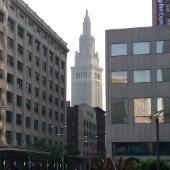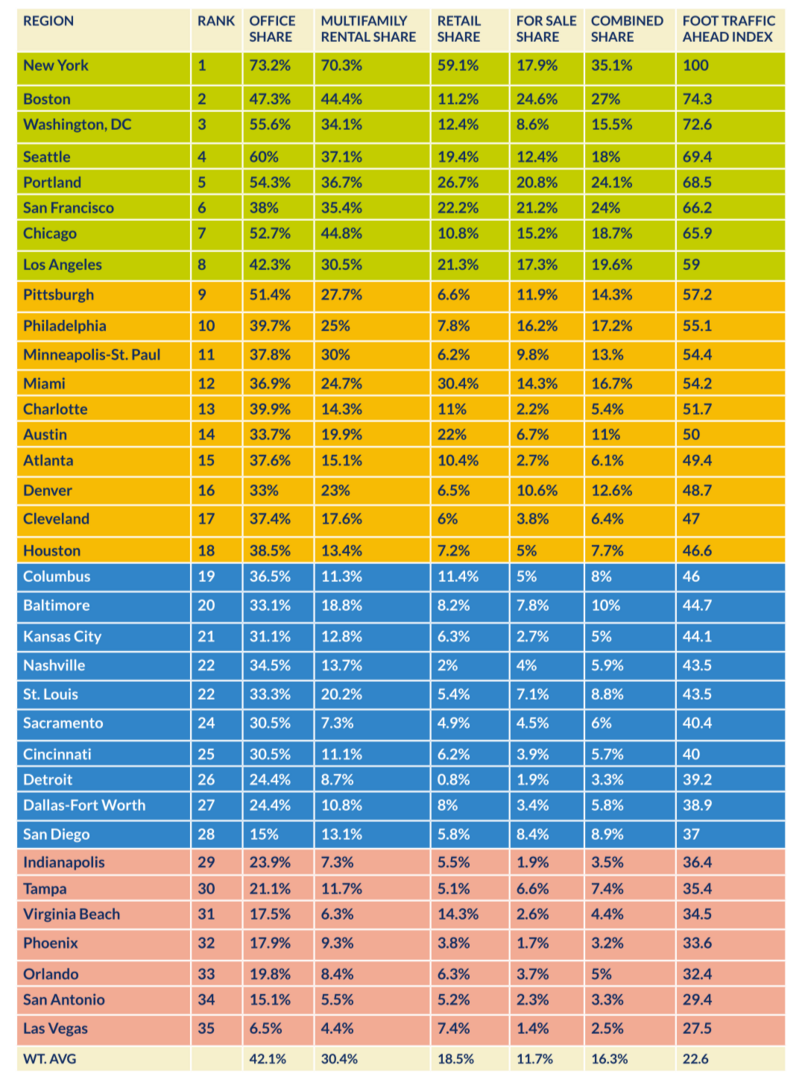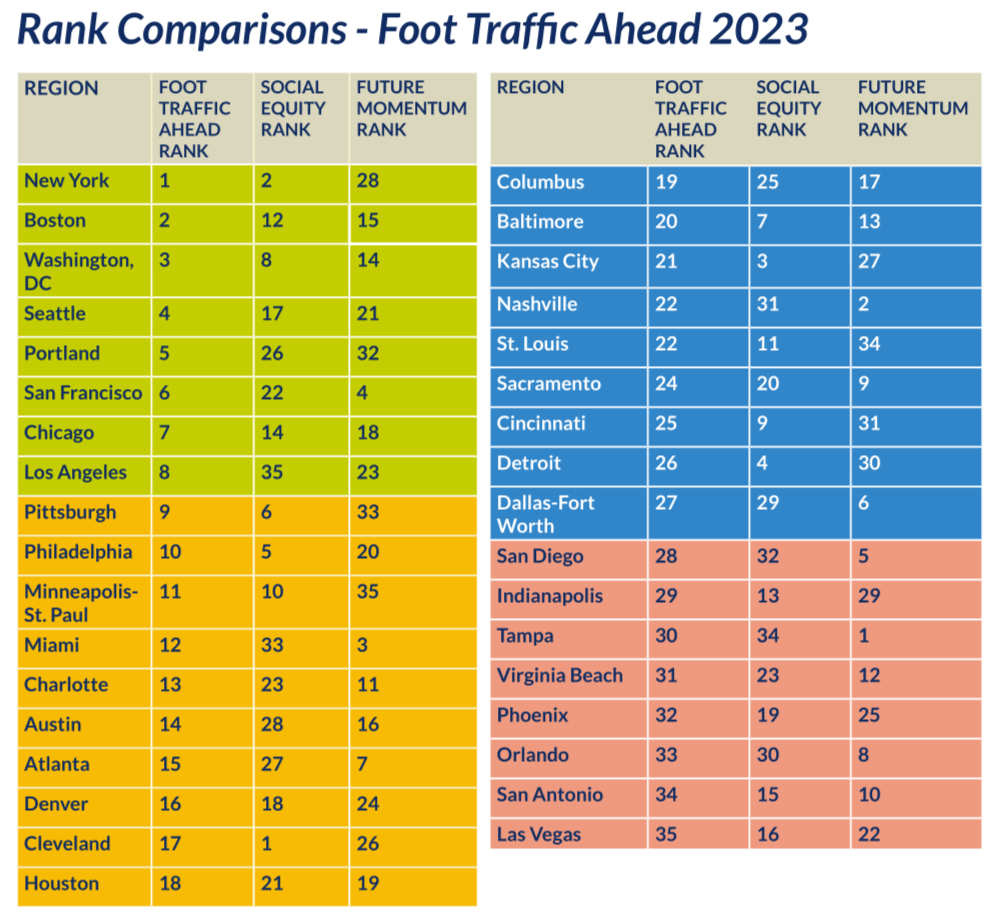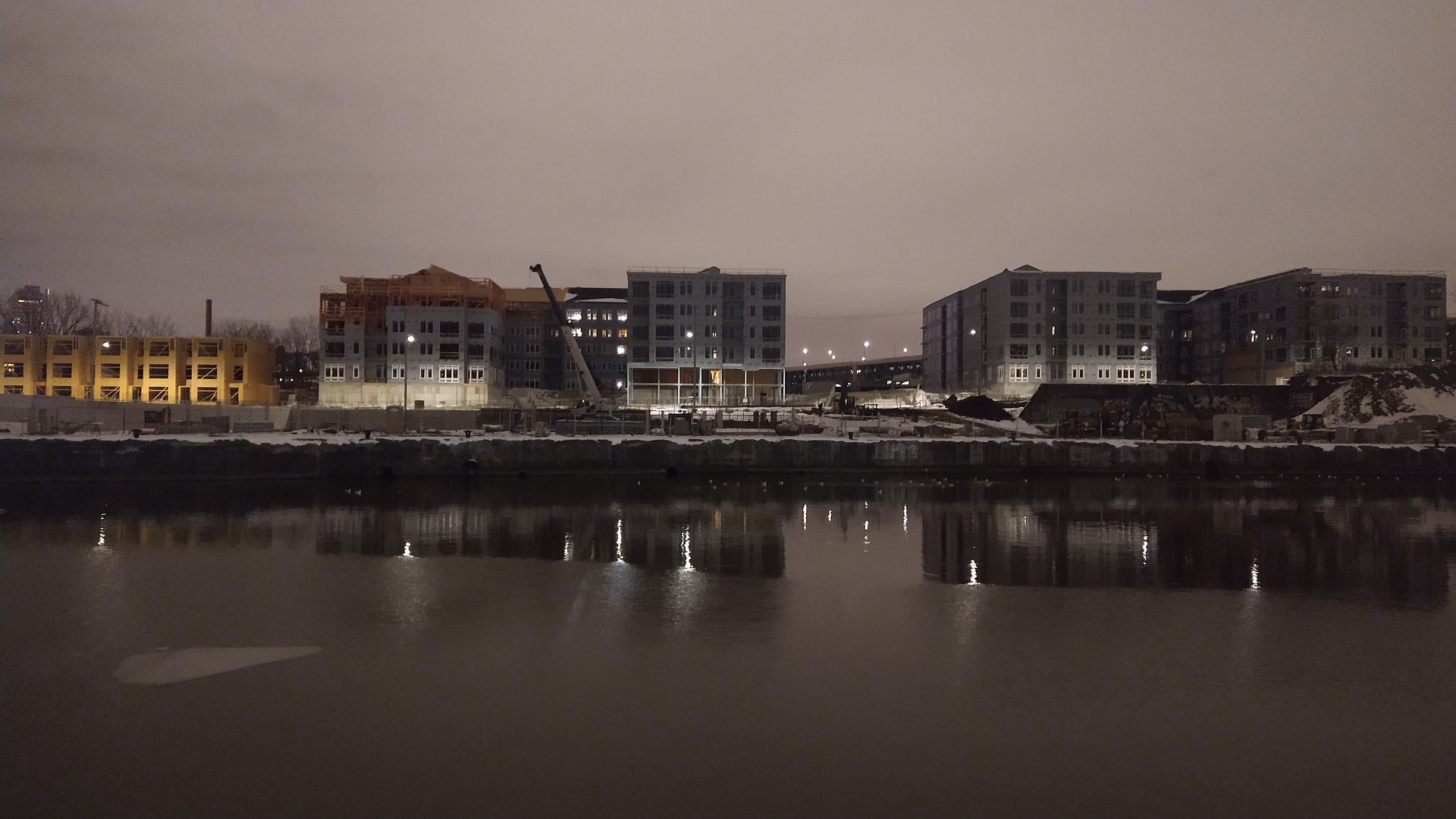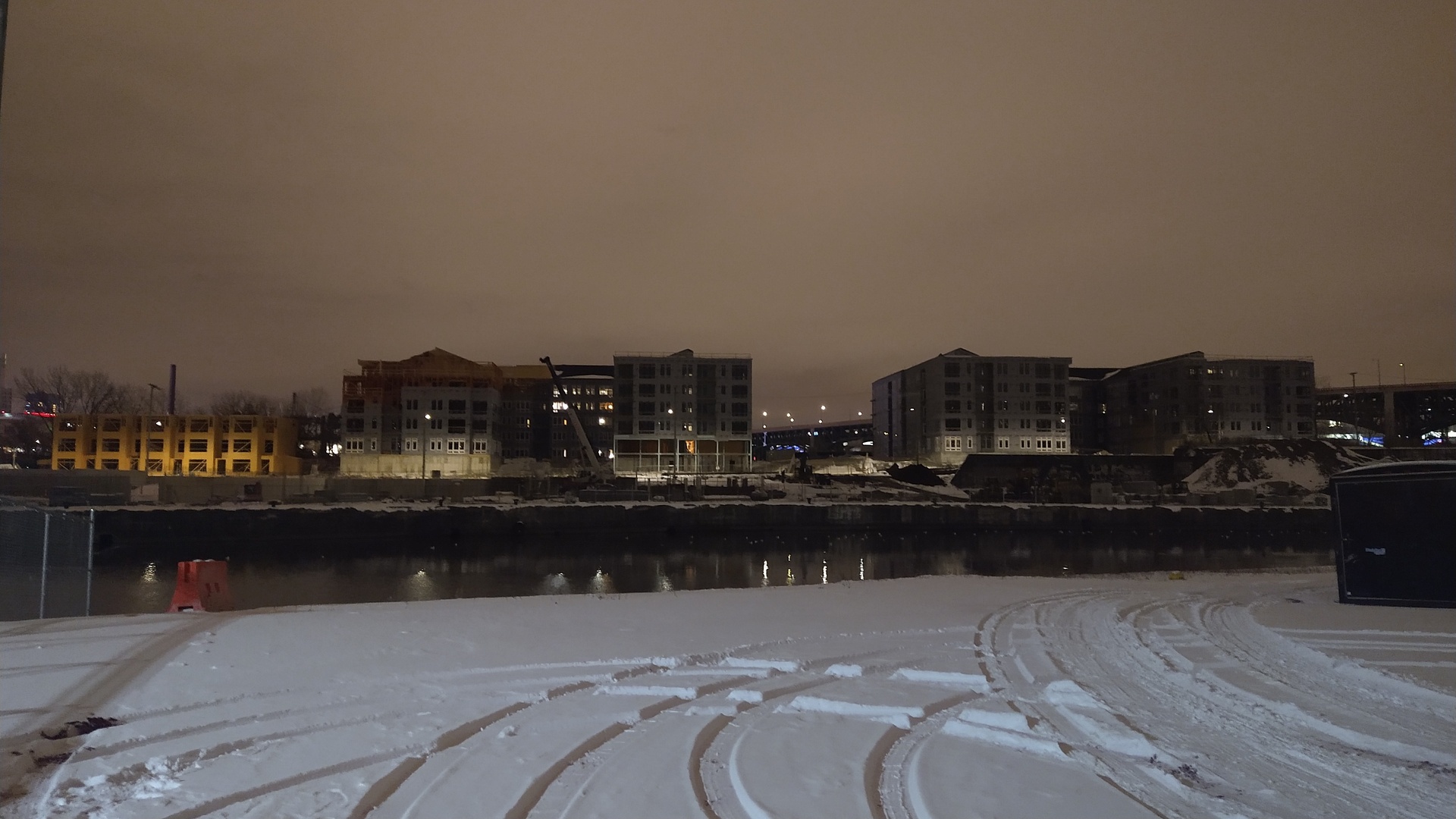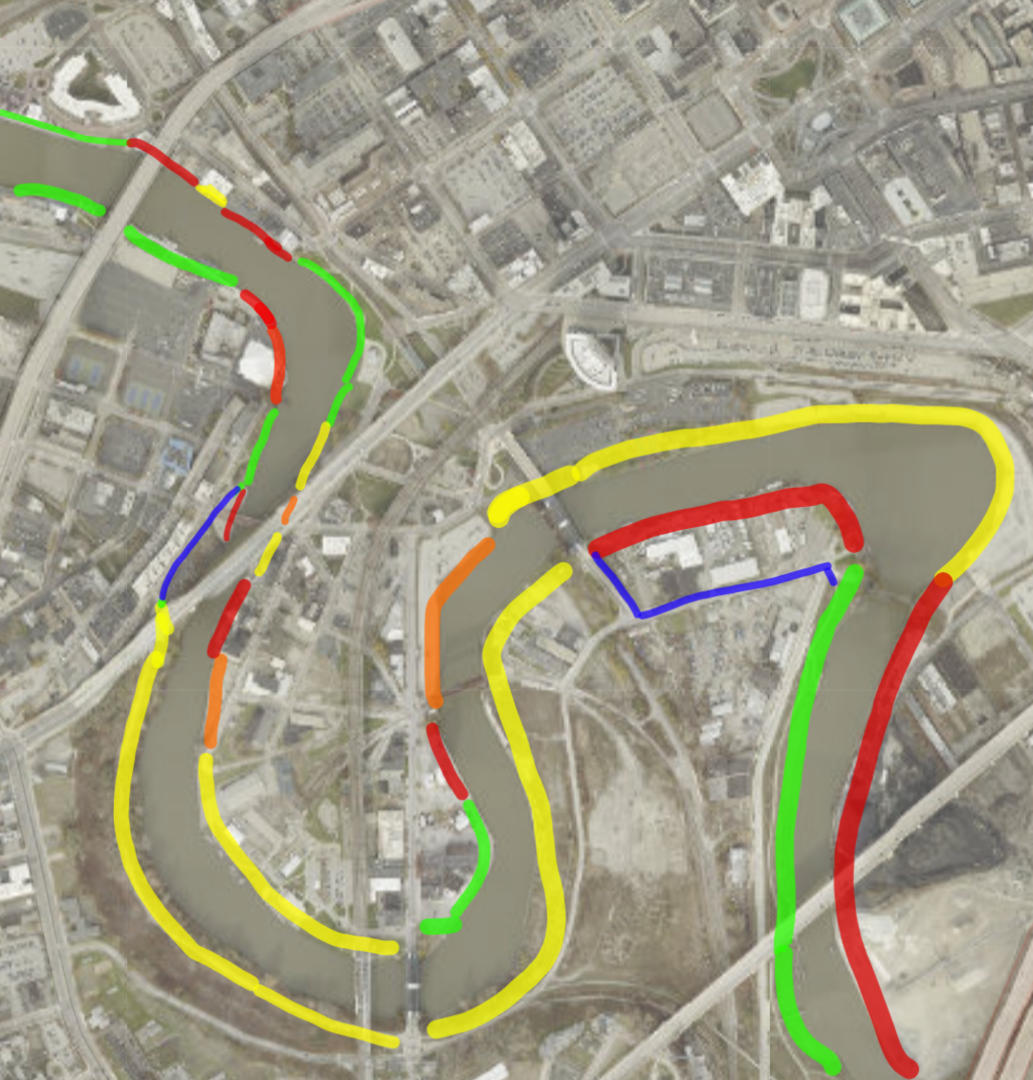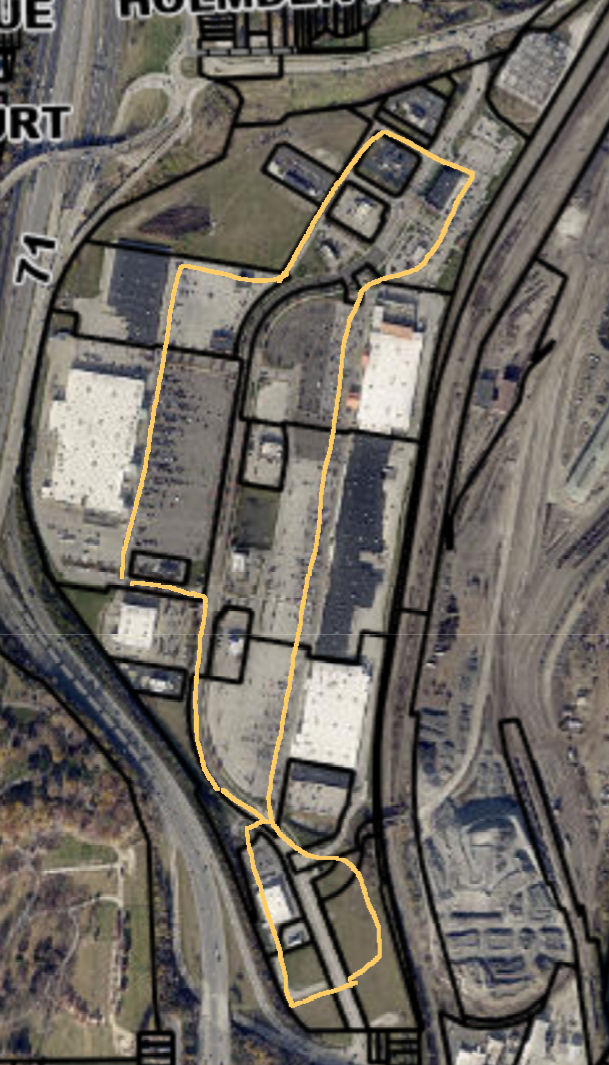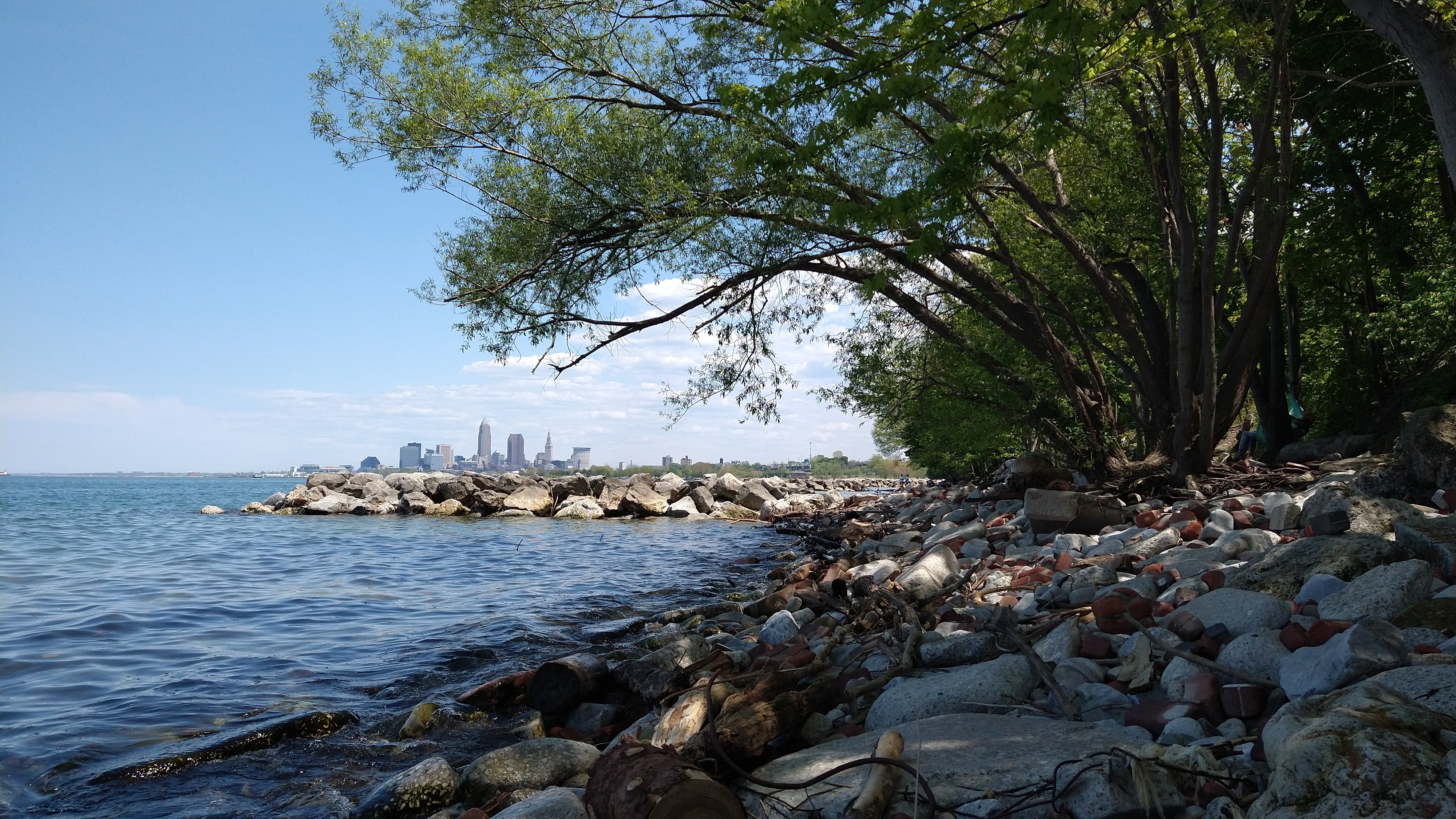
Everything posted by Ethan
-
Cleveland: Random Photos
Thought this was a great photo. Not by me, link for attribution. https://www.instagram.com/p/C2oArUzJrwL/
-
Cleveland: Random Development and News
Weird, just updated it, try it now.
-
Cleveland: Random Development and News
For people unable to read the Cleveland.com article. https://governor.ohio.gov/media/news-and-media/ohio-mixed-use-development-projects-expected-to-spur-2-billion-in-community-investments Downloadable full list at link.
-
Amtrak & Federal: Passenger Rail News
I don't disagree with most of that. I'd hope anyone with the means to actually build any of these lines would do a more rigorous analysis than this. I think there's a lot of utility though in the simplicity of this analysis; any reasonably intelligent person can understand the methodology with only the brief explanation in the video. That in and of itself is useful and interesting. The simplicity of the methodology better serves the video's purpose, which is to get people talking about HSR. Tangentially, It's also probably fair to point out that the more complicated the model the easier it is for the creator to tweak it to better serve their biases. I'd say the far more important factor being left out of this analysis is ease of construction. LA to Las Vegas is getting built before many much better pairs (based on the modeling in the video) in large part because there looks to be a viable cost effective routing option. The same distance line anywhere in the NEC would undoubtedly be more difficult and expensive. Also, for similar reasons as your comments about Columbus, Vegas is almost certainly undervalued in this analysis due to the tourist nature of the city. I'm sure there are more trips between Vegas and LA than this simple model assumes. To be honest, I'm not sure I agree with your comment that Columbus to Cincy/Cleveland would be a stronger route than Cincy or Cleveland to Chicago. While there are a lot of trips by car, I think even with a HSR option, most of those trips would still be by car. In contrast, I think rail to Chicago would induce more travel to Chicago, and grab a large slice of the existing pie. Part of the reason for existing transit patterns is that most people are reliant on cars, and people travel more on routes that are easy car trips. Plus, there are efficiencies along either route to Chicago, either passing through Indianapolis, or having a spur to Detroit (in reality Cleveland's the spur). Obviously I'm not an expert, but I've yet to see a single conceptual HSR plan from any transit expert that includes Cincy to Cleveland through Columbus, but doesn't include Cincy/Cleveland to Chicago.
-
Amtrak & Federal: Passenger Rail News
Good video from City Nerd on best city pairs for high speed rail in North America. Interesting to hear his explanation of the methodology as well as to see which cities ended up not making the cut. Here's the final map if people don't want to watch the video. (Though it's worth a watch). https://twitter.com/YIMBYLAND/status/1750212011848319369/photo/1
-
Oklahoma City: Developments and News
So more than 1,000' taller than the next tallest building. Is there any chance this actually gets built? Seems to be a great example of Burnham's "make no little plans" maxim, but it just comes across as ridiculously ambitious.
-
Another Dumb-a$$ List / Ranking of Cities
Yeah, when compiled the results look pretty suspect. Particularly after the first 10 or so. The methodology is somewhat interesting though. It's based on the percentages of different types of developments across the metropolitan area in walkable areas. Apparently the category of for-sale housing has the lowest weighting, which may partially explain Charlotte's rating. The downtown area of Charlotte is reasonably walkable. I'm not defending their conclusions, just find it interesting to see how the sausage is made.
-
Another Dumb-a$$ List / Ranking of Cities
News article ranking walkability. https://www.cntraveller.com/article/most-walkable-cities-in-the-us-ranked Download Link for actual study. https://smartgrowthamerica.org/wp-content/uploads/2023/01/Foot-Traffic-Ahead-2023.pdf
-
Ohio Intercity Rail (3C+D Line, etc)
Article in Crains that definitely belongs here. Lots of discussion about the proposed stop at Cleveland Hopkins. The article seems to treat stopping at the airport as potentially in lieu of stopping downtown, which confuses me, since my understanding is that both stops are being proposed and have been proposed since pretty much the beginning. Obviously more planning and coordination needs to take place, but I'm not sure I see much conflict presently. Maybe I'm missing something, but it seems like more drama is being injected here than exists in actuality. Cleveland contends with competing agendas for proposed transit hubs https://www.crainscleveland.com/transportation/amtrak-transit-study-proposes-station-cleveland-airport
-
Cleveland: Scranton Peninsula: Development and News
Apologies for the poor quality nighttime cell phone pictures, but there hasn't been any photos in this thread for over two months, and I was surprised how substantial these are starting to look from the other side of the river.
-
Non-Ohio Light Rail / Streetcar News
I think opening the door to true HSR in the United States is worth it, even if it comes at the expense of bringing (what will likely be) subpar service to areas that (arguably) need it more. If Brightline West is successful it could have significant knock on effects for US HSR in the near future. While I absolutely want to see 3C+D, I can't say the same thing about it. Best case, realistic scenario I can see from that is getting Michigan level service in a few decades. Also, we've funded enough studies, if someone is ready to put shovels in the ground I'm all in favor of giving them the money. Successful demonstration/implementation of the technology will do more to speed up the wide scale adoption of HSR in the USA than 1,000 studies. I think we'll have to agree to disagree. I'm more inclined to agree with @Boomerang_Brianon the merits of the route, but even accepting your premise that it's a suboptimal city pair to put public funds towards, I still think it's worth it for the reasons laid out above.
-
Non-Ohio Light Rail / Streetcar News
Maybe, but other lines don't have private capital willing to put up the majority of the funds. Even following your logic, I feel like you have to account for the fact that from a public funds perspective, this project is heavily discounted. (The 3 billion grant from the feds represents 25% of their estimated funding per https://www.gosbcta.com/brightline-west-receives-3-billion-in-federal-funding/ )
-
Cleveland: Downtown: Sherwin-Williams Headquarters
Why not turn it 45° instead of 90°? That would be a simple way to differentiate but also reflect the first building.
-
Cleveland: Flats East Bank
I think it's straight up a space issue. Restaurants make money by turning over tables. Places like Collision Bend will frequently have long waits for patio seating, and zero wait for indoor seating when the weather is nice. Sacrificing some of their patio for a boardwalk means giving up some of those highly desired outdoor tables. In other words the restaurant makes less money. This isn't to touch on how a patio abutting the river will likely be more in demand than on abutting a boardwalk. People going to these restaurants are paying for the view. The space is by far the bigger issue though. When the weather is nice I've never seen Collision Bend have a hard time filling the patio. They don't need to attract people in. What they need is space outside to seat them.
-
Cleveland: Flats East Bank
I looked at this a while ago. And we're surprisingly close on large sections of this. With some proper and consistent leadership I think it's an attainable goal! I've been slowly drifting towards this opinion. Sure, I very much like the idea of a continuous boardwalk, but a short detour down a revitalized Old River Road with plenty of riverside dining patios seems fine to me. It could be Very nice if done well. If I was starting from scratch I'd have a continuous boardwalk, but we're not, these restaurants won't give up their patios easily, nor should they. If the city wants to come up with an innovative idea such as @marty15suggested (and I wouldn't be at all surprised if he's right that more is going on behind the scenes than we realize) I'm all for it! If the city wants to push back fine, as long as they have a plan, it's great, I hope they do! I just don't want them to turn down a real development plan for a vague idea that may never materialize. And unless they have a way to continue this boardwalk past George's property and through Collision Bend, 1330, etc, I don't think it's worth it.
-
Cuyahoga Valley Scenic Railroad
As annoying as it is, I think you're right. Looking at the potential stops as laid out by KJP, the best ones are only okay not great. (Collapsed to save space). -- -- Which sort of brings me back to my original point, if it doesn't make sense to make this route dual purpose for CVSR and commuter rail, I'm not sure it makes sense to go through the trouble of extending this route all the way into Tower City. Yeah it would be cool, I'm just not sure how much trouble it's worth. I also don't really know How Much easier it would be to extend CVSR to the south flats than it would be to go to all the way to Tower City. I'm sure it's more costly, but I'm not sure how much, which makes it hard to compare costs vs benefits. I'd say extending into the south bank of the flats gives us ~80% of the benefit of extending into Tower City, so if extending into Tower City increases costs by more than 20% I don't think it's worth it. Given all the troubles that we'd encounter from not being able to run RTAs normal trains on CVSR tracks, I'm guessing it will be much more than a 20% increase in costs.
-
Cuyahoga Valley Scenic Railroad
If they're going to go through the trouble of bringing a passenger train all the way into Tower City through Independence it seems silly to not to at least consider commuter rail as well. I'm glad to hear this is being looked at. If the rail is only going to be used for CVSR I'm basically fine with extending it only up to Flats South Bank, similar to what's proposed in the Vision For The Valley. Not saying I would prefer that, just that it wouldn't upset me much. But if you're going all the way to Tower City and as a result linking Independence/Valley View to the regional rail system, the case for making this track dual use seems too strong to pass up. Though I'm not sure how realistically possible that is with RTA being electrified and CVSR not. On an unrelated note, given that most of CVSR is single track, will they have to decrease frequency to accommodate the extra length of going into downtown Cleveland? If yes can they get around this with strategic double tracking in certain areas?
-
Cleveland: Flats East Bank
The current state of those buildings is run down and blighted, and the location is incredibly prime. I might actually be more happy replacing (or reactivating) these buildings than I would be to see those parking lots gone. Blighted looking buildings don't belong that close to such a large entertainment district, and the fact that they're on the water just adds insult to injury. The idea that there's any abandoned waterfront buildings within the Flats East Bank area is ridiculous. Hopefully this is the start of correcting that.
-
Cleveland: Streetscape Improvements
Western Reserve Land Conservancy does have tree programs. Including free tree giveaways and advocacy. https://wrlandconservancy.org/reforestourcity/ Holden Forest and Gardens also have a program, though it looks less extensive. https://holdenfg.org/news/holden-forests-gardens-launches-people-for-trees/ Another good resource for anyone interested. http://www.clevelandtrees.org/
-
Cleveland: Midtown: Development and News
Does anyone know when the Midtown Food Truck Park is supposed to open? I'm looking forward to it, and hoping I can stop by and eat there this summer.
-
Cleveland: Streetscape Improvements
Thanks for the article! Interesting read. My only problem with it is that offering someone a free tree seems like asking people if they want them with a lot less overhead. If they say no, I guess you have your answer. People might say no for any number of reasons, if it's because they don't want to maintain it (they're likely correct in assuming the city won't), then that's their choice. Obviously I wish they'd say yes, but now you're into persuasion, not listening. Maybe I'm reading too far between the lines, but my impression from the article is that the people who said no, wouldn't have said yes unless the city promised to maintain the trees on their tree lawn, which just doesn't seem practical to me from the city's perspective. At least not in the day to day sense, maybe the city can promise to cut down and remove dead trees, but I'm not sure what they can do beyond that. I'm curious what specific maintenance acts residents are looking for the city to perform and if the requests are both reasonable and sufficient to change the mind of someone turning down a free tree. To be honest, I'm not sure what the city can realistically do but keep offering and making sure residents are aware of the offer. If listening sessions help (either to get grant money or persuade residents) I'll happily support them, but to be honest they sound like unnecessary overhead to me at this time.
-
Ohio Voting / Voter ID Law
Yeah, I'll retract that comment. After thinking about it more thoroughly I don't think my comment made sense. So I deleted it. I agree STAR voting is more complicated. Possibly too much so. The main reason it's favored by most experts in this field is that it most strongly incentives voters to vote there preference, and is the least susceptible to strategic voting. Which seems to be your main concern. (Not to say that it isn't at all, just less so than other methods). It is also just a better way to count the votes in that it doesn't encounter the noise from multiple election rounds. (If you haven't already watch the video I shared). I'm at the point where I'm starting to butcher the arguments, so I'll leave it to the experts at this point. (Look up condorcet paradox). It's a theoretical argument at this point anyway. Any improvement over plurality voting would be welcome by me.
-
Ohio Voting / Voter ID Law
It isn't quite the same though due to how RCV (IRV) is tabulated. It actually adds a lot of noise to the system. Depending on the order she places the candidates can matter in which round the votes get tossed. This randomness inherent to IRV can result in some wacky outcomes that don't represent the will of electorate. (See the video I linked above for a graphical representation of this). The crucial difference is scoring is done all at once. Your second choice vote doesn't get any credit in IRV if she's eliminated in the first round. This candidate does get credit with scoring though. Sure, fair point. I'd say it's a matter of risk management. Some people will want to hedge their bets, others won't. That's their right and their preference. On the whole though this effect should have a moderating effect on elections and help to elect candidates closer to the center (closer to the median voter). I think that's a feature. Disagree for the reasons I listed above. This will help move elections to the center, and elect candidates that better represent the median voter. As a bonus this should make it easier to work across the aisle. Agreed. And with RCV they will push to leave the other party off your list entirely. In either case you're back to plurality voting, so it's not worse than what we have now. But voters and smart candidates will push back against this. (In either RCV or STAR). Candidates that campaign across the aisle can now get some reward. I think that's good. (As right now they effectively get none). In this case the reward is there in either instance (RCV or STAR), the difference is that scoring eliminates the noise that arises from multiple voting rounds and as a result better reflects public opinion.
-
Ohio Voting / Voter ID Law
I can understand your perspective but I disagree. Ranking inherently forces a structure on voter's preferences that may not exist. Let's imagine a hypothetical election with six candidates, let's say three R's and three D's for the sake of simplicity. Now let's imagine some hypothetical voters. A - "vote blue no matter who" this candidate's allegiance is purely to the party, she doesn't much care which democrat wins, as long as one does, in STAR Voting she gives all Dems 5's and Repubs 0's. In Ranked choice voting she has to invent a preference ranking she doesn't have. B - This voter has a preferred democratic candidate, but can't decide between the other two Dems (or doesn't care). He doesn't really like any of the Republicans, but he sees one as tolerable. In star voting he gives his favorite a 5 and depending on his degree of preference a 4 or 3 to the other Dems and a 1 or 2 to the tolerable Republican. Again depending on preference. Edit: voter B seems closest to your concern. If he is concerned about over ranking his second choice and tolerable candidate, he can simple choose to lower their scores. Maybe only giving them 2 and 1 respectively. However if his preferred candidate isn't popular enough he risks not sufficiently supporting his second choices and tolerable options enough. In most cases voters best option is simply to reflect their preferences accurately. On the whole scoring is generally better than ranking in disincentiving gaming the system. C - This voter has a clear ranking in her head and assigns points 0-5 in order. Star voting collapses into rankings when voters preferences are actually ranked. IE. No ties. Scoring is also simply better than ranking. Imagine a hypothetical candidate that is everyone's second choice. In STAR voting this candidate will almost certainly make it to the final two candidates and possibly win. In Ranked Choice voting this candidate is eliminated first. Put simply ranking allows some funny things to happen.
-
Ohio Voting / Voter ID Law
I'm late to this party, but STAR voting is absolutely the best, I'll take any improvement over the current system but the difference between instant runoff voting (RCV) and STAR in terms of accurately reflecting voter preference is huge. I agree it may be too much for the typical voter, at least for now, but that's really a shame. @Boomerang_BrianThis video does a fantastic job of showing the differences between certain voting methods. Worth a watch. https://youtu.be/-4FXLQoLDBA




